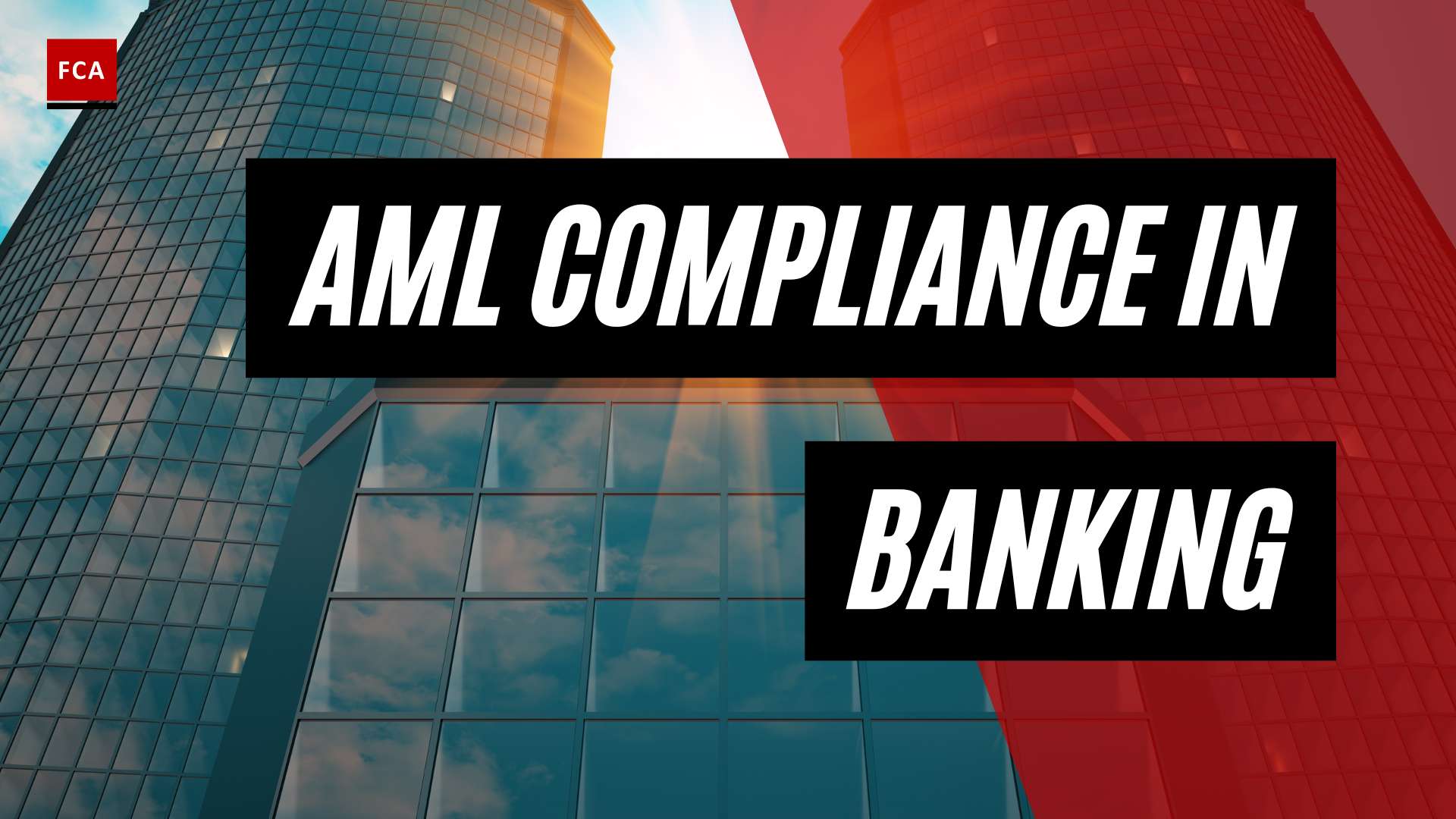Money Laundering Through Real Estate
Money laundering through real estate is a significant issue with widespread implications. Criminals utilize various techniques to exploit the real estate sector for illicit purposes, making it one of the oldest and most popular ways to move and conceal ill-gotten funds. Understanding the overview of real estate money laundering and its prevalence is crucial in combatting this illicit activity.
Overview of Real Estate Money Laundering
Money laundering through real estate involves the process of making illegally obtained funds appear legitimate through property transactions. Criminals exploit the high-value nature of real estate transactions to legitimize their illicit funds and integrate them into the legitimate economy. The use of real estate in money laundering schemes provides several advantages, including the ability to store value, generate income, and facilitate the movement of funds across borders (Sanction Scanner).
Various methods are employed to launder money through real estate. These include purchasing properties with cash, concealing ownership through complex webs of shell companies or hidden property ownership, and employing third parties to conduct real estate transactions on behalf of the criminals (Sanction Scanner). Criminals may also engage in property flipping, inflating property values, manipulating lease agreements, and participating in mortgage fraud schemes to facilitate their money laundering activities (Sanction Scanner).
Prevalence of Real Estate Money Laundering
Real estate money laundering is a global concern, occurring in various countries and regions. Notable hotspots for money laundering through real estate include the United States, the United Kingdom, Australia, Canada, and Germany. Cities like London, Toronto, Vancouver, and New York have witnessed significant inflows of illicit funds into their real estate markets (ComplyAdvantage).
The scale of real estate money laundering is substantial. For example, from 2015 to 2021, over $2.3 billion was laundered through U.S. real estate alone, underscoring the magnitude of the problem. In Germany, approximately $30 billion of funds with uncertain origins entered the real estate market in 2017, while the Greater Toronto area in Canada saw around $20 billion of questionable funds flowing into its real estate market over the past decade (Sanction Scanner).
The prevalence of real estate money laundering necessitates stringent regulatory measures and enhanced cooperation among stakeholders to effectively combat this illicit activity. By understanding the techniques employed in real estate money laundering, regulatory measures in place, and technological solutions available, industry professionals can play a vital role in detecting and preventing money laundering through real estate transactions.
Techniques Used in Real Estate Money Laundering
Money laundering through real estate involves various techniques employed by criminals to conceal the illicit origins of funds. Understanding these techniques is crucial for effective investigations and prevention. Here are three commonly used methods in real estate money laundering:
Manipulation of Property Prices
One technique utilized in real estate money laundering is the manipulation of property prices. Criminals artificially inflate or deflate property values to facilitate their illicit activities. By inflating prices, they can legitimize their illegal funds and make them appear as legitimate real estate investments. Conversely, deflating prices helps them reduce the apparent value of their illicit assets, making it difficult for law enforcement agencies to trace the origin of the funds.
Manipulation of property prices can involve various schemes, such as property flipping, inflating property values, and manipulating lease agreements. These activities distort the market and create opportunities for criminals to launder money (Sanction Scanner).
Collusion with Sector Gatekeepers
Collusion with sector gatekeepers is another technique employed in real estate money laundering. Gatekeepers, such as real estate agents, lawyers, accountants, and mortgage brokers, play a crucial role in facilitating real estate transactions. Criminals may collude with these professionals to bypass due diligence procedures, conceal ownership, and manipulate transactions.
By working with complicit gatekeepers, criminals can exploit vulnerabilities in the system and undermine the integrity of real estate transactions. This collaboration allows them to obscure the true beneficial ownership of properties and avoid detection by authorities.
Use of Illicit Funds for Property Investments
Criminals often employ the use of illicit funds for property investments as a way to legitimize their illegal proceeds. They may utilize cash obtained from illicit activities, such as drug trafficking or corruption, to make substantial property purchases. By integrating these funds into the real estate market, criminals can launder their money and create an appearance of legitimate wealth.
To further complicate the tracing of funds, criminals may employ complex schemes involving shell companies, hidden property ownership, or third parties to mask their involvement and obscure the true source of the funds. These tactics make it challenging for law enforcement agencies to follow the money trail and identify the illicit origins of the funds.
To combat these techniques, stringent regulations and enhanced due diligence measures are necessary. Real estate professionals, financial institutions, and law enforcement agencies must collaborate to identify suspicious transactions and implement effective preventive measures. Additionally, the use of advanced technologies, such as artificial intelligence (AI), machine learning (ML), and big data analytics, can assist in detecting patterns and anomalies associated with money laundering activities in the real estate sector.
By understanding the techniques used in real estate money laundering, authorities can strengthen their investigative efforts and develop proactive strategies to prevent criminals from exploiting the real estate market for illicit purposes.
Hotspots for Real Estate Money Laundering
Money laundering through real estate is a significant issue, with hotspots located in various countries around the world. These hotspots serve as attractive destinations for criminals looking to legitimize their illicit funds through real estate transactions. Let’s take a closer look at some of these hotspots:
United States
The United States has been a prominent location for real estate money laundering. Between 2015 and 2021, over $2.3 billion was laundered through U.S. real estate transactions alone, making it one of the oldest and most popular methods for moving and hiding illicit funds (ComplyAdvantage). Notable cities such as New York serve as hubs for such activities, attracting illicit funds from around the world.
United Kingdom
The United Kingdom, particularly London, is another hotspot for real estate money laundering. Criminals exploit the high-value nature of real estate transactions in London, making it an attractive destination for money laundering activities. The city’s international status and prestigious property market have made it vulnerable to illicit funds entering the real estate sector (ComplyAdvantage). London’s property market has seen an influx of suspicious funds, raising concerns about the effectiveness of anti-money laundering measures.
Australia
Australia has also experienced instances of money laundering through real estate. Criminals have taken advantage of the country’s robust property market, particularly in cities like Sydney and Melbourne. The high demand for real estate in these cities has made it an attractive avenue for money laundering activities. It is essential for Australian authorities to remain vigilant and strengthen their anti-money laundering efforts to combat this issue.
Canada
Canada, particularly the Greater Toronto area, has witnessed significant inflows of funds with uncertain origins entering the real estate market over the past decade. Approximately $20 billion entered the Greater Toronto area without proper scrutiny from anti-money laundering authorities. The influx of suspicious funds has raised concerns about the real estate sector’s vulnerability to money laundering activities (Sanction Scanner). Canadian authorities are working to enhance their regulations and enforcement to address this issue effectively.
Germany
Germany is another notable hotspot for real estate money laundering. Criminals have exploited the German real estate market, with approximately $30 billion of funds with uncertain origins entering the market in 2017 alone. The high-value nature of real estate transactions and the attractiveness of the German property market have made it an appealing destination for money laundering activities. German authorities are actively working to strengthen their anti-money laundering measures to mitigate the risks associated with real estate money laundering.
These hotspots highlight the prevalence of real estate money laundering and the need for robust regulations and enforcement to combat this issue. Authorities in these countries, along with international cooperation, are working towards enhancing transparency and preventing money laundering through real estate transactions.
Real-World Cases of Real Estate Money Laundering
To truly understand the impact and prevalence of money laundering through real estate, it’s important to examine real-world cases that have brought this issue to light. Two notable cases that shed light on real estate money laundering include the Honduran man’s property investments in New Orleans and alleged illegal real estate transactions involving a Vatican-owned account.
Honduran Man’s Property Investments in New Orleans
One significant case involved a Honduran man who engaged in money laundering by utilizing international wire transfers to purchase properties in New Orleans. This individual used illicit funds to acquire real estate, effectively disguising the origin of the money. This case highlights the complexity and global nature of real estate money laundering schemes, as criminals take advantage of cross-border transactions to obfuscate the funds’ true source (ComplyAdvantage).
Alleged Illegal Real Estate Transactions Involving Vatican-Owned Account
Another case that brought attention to real estate money laundering involved allegations of illegal real estate transactions connected to a Vatican-owned account. It was reported that this account was involved in investing a substantial amount of $350 million in London property, raising concerns about potential money laundering activities. Investigations aimed to uncover the true nature of these transactions, highlighting the need for robust regulatory measures and enhanced due diligence to combat money laundering in the real estate sector (ComplyAdvantage).
By examining these real-world cases, it becomes evident that money laundering through real estate is an ongoing issue that requires the attention and collaboration of regulatory bodies, financial institutions, and law enforcement agencies. These cases underscore the need for enhanced due diligence, reporting requirements, and transparency measures to detect and prevent illicit activities within the real estate sector. Understanding the techniques and methods employed in these cases is crucial in developing effective strategies to combat real estate money laundering.
Regulatory Measures to Combat Real Estate Money Laundering
To address the issue of money laundering through real estate, regulatory bodies around the world have implemented measures to combat this illicit activity. These measures aim to increase transparency, enhance reporting requirements, and minimize the loopholes that can be exploited by money launderers. Here are some of the key regulatory measures in place:
Scrutiny of All-Cash Transactions in Real Estate
One significant regulatory measure focuses on increasing scrutiny of all-cash transactions in the real estate sector. These transactions, where the purchase is made entirely in cash without the involvement of a mortgage, have been identified as a key loophole exploited by money launderers. Regulators, such as the US Treasury and the Biden administration, are particularly focused on these transactions and are implementing measures to monitor and investigate them more closely.
Corporate Transparency Act and Reporting Requirements
The Corporate Transparency Act (CTA) is a crucial legislative development in the fight against real estate money laundering. The CTA expanded the regulatory framework for anti-money laundering investigations in real estate transactions. Under this act, covered business entities involved in real estate transactions are required to report certain information to the Financial Crimes Enforcement Network (FinCEN), including beneficial ownership information and the identity of the individuals involved in various real estate transactions (Federal Register).
By increasing transparency and reporting requirements, the CTA aims to prevent money launderers from using real estate transactions to hide illicit funds. It provides regulatory bodies with valuable information to track and investigate suspicious activities.
Exemptions for Personal Use Property Purchases
While regulatory measures aim to combat money laundering in real estate, there are exemptions in place to ensure that individuals purchasing properties for personal use are not burdened with excessive reporting requirements. The final rule implementing the CTA provides a partial exemption for individuals who buy properties for personal use, and not as part of a business or income-generating activity, from the reporting requirements related to beneficial ownership information (Federal Register).
This exemption recognizes that not all real estate transactions pose the same money laundering risks. It allows individuals buying properties for personal use, such as primary residences or vacation homes, to enjoy a level of privacy while ensuring that transactions with potential money laundering risks remain subject to enhanced scrutiny.
By implementing these regulatory measures, authorities are working to detect and prevent real estate money laundering. These measures increase transparency, enhance reporting requirements, and close loopholes that money launderers may exploit. However, it is an ongoing challenge that requires continuous monitoring, cooperation between regulatory bodies, financial institutions, real estate professionals, and law enforcement, as well as the use of advanced technological solutions to detect and prevent illicit activities.
Enhancing Transparency and Compliance in Real Estate Transactions
To combat the issue of money laundering through real estate, it is crucial to enhance transparency and promote compliance in real estate transactions. Regulatory measures and record retention requirements play a significant role in addressing this concern. Additionally, compliance with the Bank Secrecy Act is essential in detecting and preventing real estate money laundering.
Record Retention Requirements
To ensure accountability and facilitate investigations, covered business entities involved in real estate transactions are required to retain records of the information reported to the Financial Crimes Enforcement Network (FinCEN) for five years following the last day of the year in which the report was filed (Federal Register). This retention period allows for the availability of relevant information when needed. By retaining records, authorities can effectively analyze and track suspicious activities, aiding in the fight against real estate money laundering.
Compliance with Bank Secrecy Act
Compliance with the Bank Secrecy Act is a critical component in the fight against real estate money laundering. The Bank Secrecy Act requires financial institutions and covered business entities involved in real estate transactions to implement robust anti-money laundering (AML) programs. These programs include policies, procedures, and internal controls designed to detect and prevent money laundering activities.
In December 2021, the US Treasury issued a final rule that enhances transparency in real estate transactions and strengthens compliance with the Bank Secrecy Act. This rule requires covered business entities to report certain information to FinCEN, such as beneficial ownership information and the identity of the individual applicant involved in various real estate transactions. By collecting this information, authorities can better track and detect potential money laundering activities.
The final rule provides a partial exemption for individuals purchasing properties for personal use, exempting them from reporting requirements related to beneficial ownership information if the property is not part of a business or income-generating activity. This exemption ensures that the reporting requirements do not unduly burden individuals engaged in personal real estate transactions.
By enforcing compliance with the Bank Secrecy Act and implementing proper reporting mechanisms, regulators aim to increase transparency and prevent money laundering activities in the real estate sector. These measures contribute to a stronger framework for identifying and combating real estate money laundering.
It is important for professionals working in compliance, risk management, anti-money laundering, and anti-financial crime to stay informed about the latest regulations and requirements in order to effectively enhance transparency and compliance in real estate transactions.
Strengthening Anti-Money Laundering Efforts in Real Estate
To effectively combat real estate money laundering and protect the integrity of the real estate sector, it is crucial to strengthen anti-money laundering (AML) efforts through enhanced cooperation between financial institutions, real estate professionals, and law enforcement agencies. Additionally, implementing robust due diligence and Know Your Customer (KYC) procedures is essential in identifying and preventing illicit activities.
Cooperation Between Financial Institutions, Real Estate Professionals, and Law Enforcement
Close collaboration between financial institutions, real estate professionals, and law enforcement agencies is vital in detecting and reporting suspicious transactions related to money laundering in the real estate sector. Financial institutions play a critical role in monitoring and analyzing transactions, while real estate professionals, such as agents, brokers, and developers, can contribute by promptly reporting any suspicious activities they observe.
By establishing effective channels of communication and sharing information, these stakeholders can work together to identify patterns, red flags, and emerging trends associated with real estate money laundering. This collaboration enables prompt reporting to the appropriate authorities, facilitating investigations and the implementation of necessary preventive measures.
Due Diligence and Know Your Customer (KYC) Procedures
Implementing robust due diligence and KYC procedures is crucial in preventing real estate money laundering. These procedures involve verifying the identity of parties involved in real estate transactions and conducting thorough background checks to ensure compliance with AML regulations.
Real estate professionals and financial institutions must conduct due diligence on buyers, sellers, and other parties involved in transactions, including beneficial owners and entities. This process includes verifying identities, collecting relevant documentation, and assessing the legitimacy of the funds being used for the transaction.
By performing comprehensive due diligence and KYC procedures, potential risks associated with money laundering can be identified, and any suspicious activities can be reported to the appropriate authorities. This proactive approach helps safeguard the real estate industry and contributes to the overall efforts in combatting money laundering.
To further enhance the effectiveness of due diligence and KYC procedures, stakeholders can leverage technological solutions such as AI and machine learning, blockchain technology, big data analytics, and cybersecurity measures. These tools can streamline and automate the verification process, improve data accuracy, and enhance risk assessment capabilities.
By strengthening cooperation and implementing robust due diligence and KYC procedures, the real estate sector can mitigate the risk of money laundering and contribute to global efforts in combating illicit financial activities. The regulatory landscape continues to evolve, and it is crucial for stakeholders to stay informed and adapt to new regulations and best practices to ensure the integrity and transparency of real estate transactions.
Technological Solutions for Detecting and Preventing Real Estate Money Laundering
To combat the sophisticated methods used in real estate money laundering, advancements in technology have played a crucial role. Various technological solutions, such as AI and machine learning, blockchain technology, big data analytics, and cybersecurity measures, have been employed to detect and prevent money laundering activities. These technologies enhance the capabilities of financial institutions and regulatory bodies in identifying suspicious transactions and mitigating the risk of money laundering.
AI and Machine Learning
AI and machine learning have emerged as powerful tools in the fight against money laundering. By analyzing vast amounts of data and customer behavior, these technologies can flag potentially suspicious transactions and reduce the time needed for investigations. For example, HSBC implemented an AI system that detects anomalies and patterns indicative of money laundering activities. This helps financial institutions stay one step ahead of criminals and minimize the impact of money laundering.
Blockchain Technology
Blockchain technology, renowned for its secure and transparent ledger, has significant potential in combating money laundering in real estate transactions. By providing transparency and traceability of transactions, blockchain makes it more challenging for criminals to launder money through complex networks. Each transaction recorded on the blockchain is immutable and can be accessed by authorized parties, making it easier to track and identify suspicious activities. Companies like BitAML utilize blockchain technology to track transactions and enhance the detection of money laundering in real estate transactions.
Big Data Analytics
Big data analytics plays a pivotal role in detecting and preventing real estate money laundering. Financial institutions employ this technology to analyze large datasets, identify patterns, and uncover trends that may indicate suspicious activity. By examining customer behavior, transaction history, and other relevant data, big data analytics enables institutions to proactively identify potential money laundering activities. For instance, JPMorgan Chase uses big data analytics to analyze vast amounts of data and detect patterns that may point to money laundering activities in real estate transactions.
Cybersecurity Measures
Given the increasing prevalence of cyberattacks, robust cybersecurity measures are essential in preventing real estate money laundering. Criminals often attempt to exploit vulnerabilities in financial systems to gain unauthorized access. Financial institutions, such as Bank of America, implement comprehensive cybersecurity measures to protect against money laundering activities. These measures include multi-factor authentication, encryption protocols, and security monitoring systems. By safeguarding financial systems from cyber threats, institutions can minimize the risk of money laundering and protect the integrity of real estate transactions.
While technologies such as AI, blockchain, big data analytics, and cybersecurity have proven effective in combatting money laundering, it is essential to recognize that no single solution is foolproof. Criminals are continually evolving their methods, necessitating ongoing enhancements in anti-money laundering measures. The combination of these technological solutions with robust regulatory frameworks and diligent human oversight is crucial in staying ahead of criminal activities in the real estate sector.








